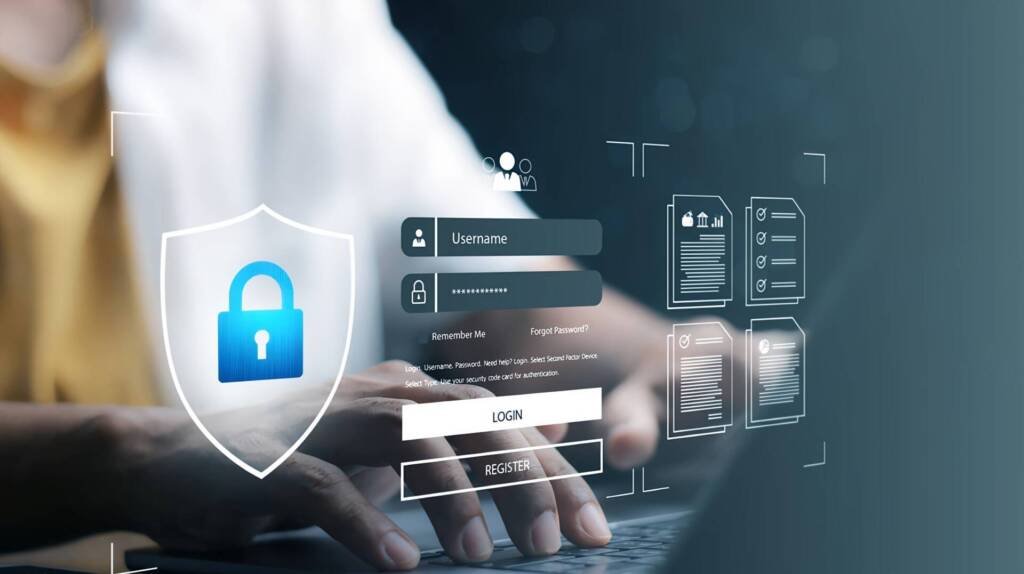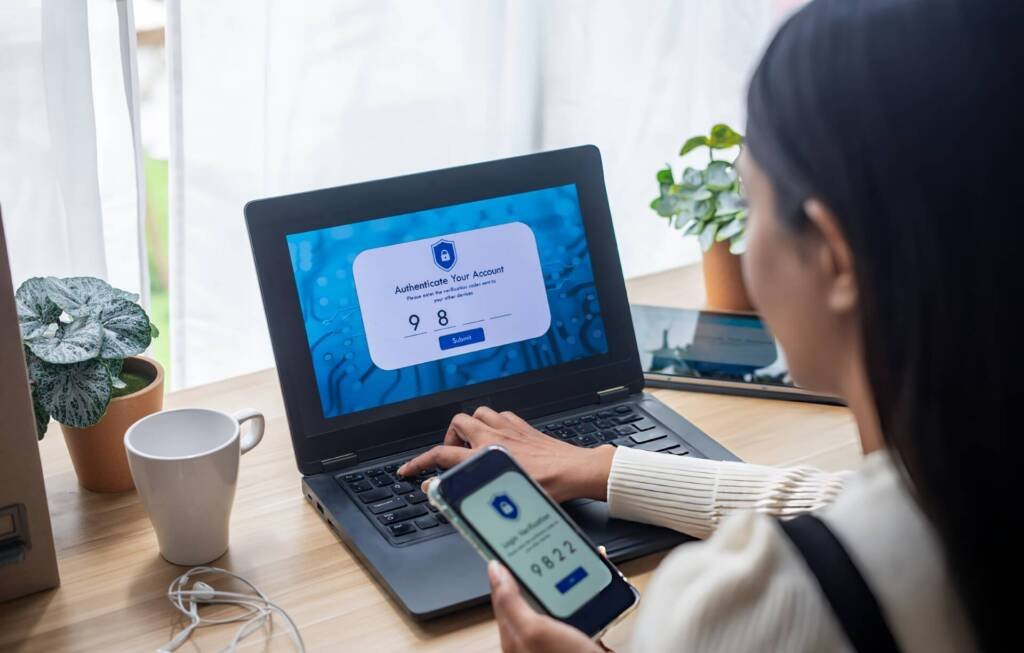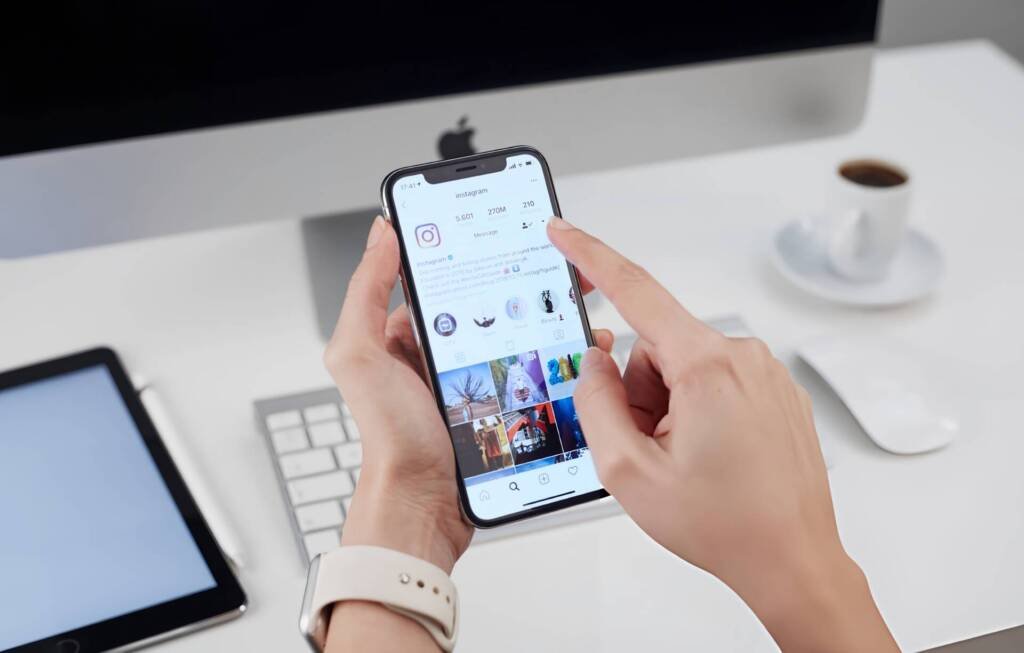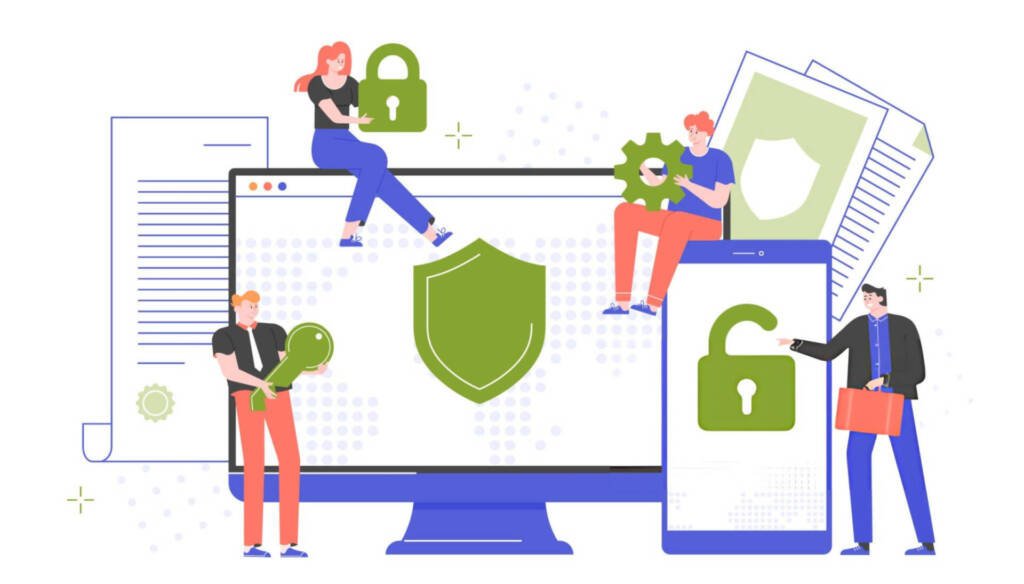Building your online presence is more important than ever—whether you’re growing your personal brand, running a business, or simply connecting with friends and family. Social media offers endless opportunities to share your story, expand your network, and even create new career paths. However, alongside these opportunities come significant risks. Online threats like identity theft, doxxing, harassment, and unauthorized use of your content can leave you feeling exposed and vulnerable, undermining your sense of safety and control.
Table of Contents
So, how can you build a strong online presence while staying secure and feeling safe in your identity? This blog dives into ten practical and actionable strategies to help you maintain your safety while thriving on social media. We’ll cover everything from using platform-specific privacy settings to avoid oversharing, protecting your content with watermarks, segmenting your profiles for different audiences, and creating strong, unique passwords to secure your accounts.
These tips will equip you with the tools you need to take control of your online identity, empowering you to engage with the digital world on your own terms.
What’s at Stake with Your Online Identity?

Your online identity is like your digital fingerprint—it represents how you appear and interact on the internet. From photos, bios, and posts to social media activity and online profiles, every element shapes how others perceive and engage with you, both personally and professionally. In today’s connected world, a thoughtfully curated online presence has become essential for building a personal brand, establishing professional credibility, and forging meaningful connections across the globe.
However, with this visibility comes real risks. Without proper precautions, your digital life can become vulnerable to a range of threats. Some of the most common online dangers include:
- Identity Theft – Cybercriminals can steal personal details like your name, address, or financial information to impersonate you, make fraudulent transactions, or access sensitive accounts.
- Doxxing – Bad actors may find and publicly share private information, such as your home address or phone number, putting your safety and privacy at risk.
- Trolling and Harassment – The internet can be a breeding ground for negative comments, cyberbullying, and malicious attacks, which can severely impact your mental well-being.
- Content Theft – Your creative work, such as photos, videos, or written content, can be stolen and reposted without your permission, often for commercial gain or to misrepresent your identity.
This growing concern is more than just anecdotal. A 2021 Pew Research study revealed that 80% of Americans expressed concerns about their online privacy, and it’s easy to see why. Social media platforms, websites, and other digital services collect and expose an overwhelming amount of personal data. This data is often shared with advertisers or left accessible to the public, making it critical for individuals to understand and control how much they’re sharing with the world.
Taking proactive steps to protect your online identity is essential to mitigate these risks. Below are ten actionable strategies you can implement today to safeguard your digital presence and maintain your privacy. Whether you’re a casual internet user or someone who relies on your online presence for professional success, these tips will help you stay secure in an increasingly interconnected world.
Strategy 1: Use Privacy Settings Wisely

Every major social media platform offers privacy tools, but they’re only helpful if you take the time to activate and customize them to fit your needs. These settings can help you take control of how your information is shared and who can interact with you, creating a safer and more enjoyable online experience. Here are a few tips for managing privacy on popular platforms:
- Instagram: Go to your privacy settings to make your account private so only approved followers can see your posts. You can also restrict who can send you direct messages, block certain users, and turn off location tagging to keep your whereabouts private. Turning off activity status is another way to limit how much others know about your online activity.
- LinkedIn: Protect your professional profile by hiding your details, like your email and phone number, from people who aren’t connected to you. You can also control who can send you connection invitations or view your activity updates, ensuring your professional information is only visible to the right audience.
- TikTok: Adjust your privacy settings to limit who can view your videos, comment on them, or duet with your content. You can also manage who can send you messages and block specific users. For younger users, TikTok offers additional safety features like restricted mode to filter out age-inappropriate content.
Take a moment to review and tweak your privacy settings on each platform to match your preferences. This essential but crucial step can significantly reduce your exposure to unwanted interactions, giving you more control over your online presence.
👋 Tip: Most platforms regularly update their privacy settings and features, so it’s checking them quarterly is a good idea. New tools are often introduced to help enhance your safety and ensure your data stays secure.
Strategy 2: Guard Your Personal Information

Think twice before sharing sensitive information like your full address, phone number, or birthday on social media. It might seem harmless at first, but these details can be exploited by scammers for identity theft and fraud. Even small pieces of information could be pieced together to access your accounts or impersonate you online.
What not to share:
- Complete birthdates: Sharing your birth year might feel harmless, but it’s a goldmine for identity thieves who use it to guess passwords or verify accounts.
- Photos showing your home address or workplace: A casual photo with your house number or office sign in the background could reveal more than you realize.
- Personal updates with exact travel dates: Announcing that you’ll be out of town could make you a target for burglary or other risks.
When crafting your social media bio, less is more. Stick to something generic but still fun and engaging. For example:
“Coffee lover ☕ | Marketer by day, plant parent by night 🌱”
These small precautions go a long way in protecting your privacy while still allowing you to express yourself online. Always think about what a stranger could infer from your posts!
Strategy 3: Invest in Two-Factor Authentication (2FA)

Two-factor authentication (2FA) adds an extra layer of security to your accounts, making it significantly harder for unauthorized users to gain access. Here’s how it works:
- First, you log in with your password as usual.
2. Then, you confirm your identity by entering a unique code sent to your phone, email, or authentication app. This ensures that even if someone steals your password, they still can’t access your account without the second verification step.
Setting it up is quick and easy:
- Most platforms, like Instagram, TikTok, and LinkedIn, provide straightforward tutorials to help you enable 2FA in just a few minutes.
- To secure your login codes, consider using reliable and easy-to-use apps like Google Authenticator or Authy. These apps generate time-sensitive codes that add an extra layer of safety.
Why should you bother? This simple but effective security measure greatly reduces the chances of unauthorized access and protects your personal and sensitive information. It’s a small step that can save you from big headaches. Take a few minutes to set it up today—your future self will thank you for it!
Strategy 4: Manage Your Digital Footprint

Your online activity leaves behind a trail—your digital footprint. This footprint includes everything from social media posts and online profiles to photos and comments, and if left unchecked, it can provide personal information to people searching for you. Maintaining control of your digital presence is more important than ever in today’s connected world, whether for personal privacy or professional reputation.
Here’s how to clean it up and take charge of your online image:
- Scan mentions and tags: Regularly search your name on search engines and social media platforms. Look for mentions, photos, or tags that don’t align with how you want to be perceived. Remove tags from photos that don’t represent your personal or professional brand, and politely request others to take down any unwanted content.
- Review old accounts: Many of us have profiles on platforms we haven’t used in years. These unused accounts can still hold personal data and outdated information. Take the time to delete any inactive or irrelevant accounts that no longer serve you.
- Use monitoring tools: Stay proactive by using tools like Google Alerts to track where your name or related keywords appear online. Platforms like BrandYourself can also help you manage and optimize your digital reputation by highlighting areas that need improvement.
What is the result of taking these steps? A professional, polished online reputation that gives you more control over how you’re perceived and protects your personal information from falling into the wrong hands. Taking small, consistent actions can make a big difference in shaping a positive and secure digital presence.
Strategy 5: Use Professional Segmentation

Separate your professional and personal profiles to create a clear boundary between work and private life. This strategy helps protect your privacy and ensures that your audience sees content tailored to their interests.
For example:
- Use your personal Instagram to share family photos, vacation snapshots, and moments with friends while reserving your professional account for showcasing your industry expertise, sharing thought leadership, and connecting with like-minded professionals.
- Keep LinkedIn focused solely on your professional life, such as your achievements, expertise, and networking, and avoid using it for casual social updates that might dilute your professional image.
This separation allows you to curate content specifically for the right audience while maintaining a healthy balance between your personal and professional worlds. Many online creators and professionals thrive with this approach, as it ensures clarity, enhances their personal brand, and provides a sense of security for their private lives. It’s a simple yet effective way to communicate purposefully in a digital landscape.
Strategy 6: Protect Your Content from Theft

If you’re an artist or creator, your content is one of your most valuable assets; protecting it should be a top priority. With the rise of digital platforms, it’s easier than ever for your work to be shared—or stolen—without your permission. Here are some steps you can take to keep your content safe:
- Use tools like Canva to add watermarks to your photos or videos. Watermarks clarify that the content belongs to you and discourage unauthorized use. They’re a simple yet effective way to establish ownership over your work.
- File for copyright if you create original work such as designs, music, or videos. Copyrighting your content legally protects it, ensuring you have complete control over how it’s used. It also gives you the option to take legal action if someone uses your work without permission.
- If your content gets stolen, don’t hesitate to act. Platforms like Instagram, TikTok, and LinkedIn offer straightforward reporting options for copyright infringement. Reporting the issue quickly can help limit the unauthorized spread of your content.
By taking these steps, you can focus on creating without the stress of losing control over your work. Don’t wait until it’s too late—start protecting your content today!
Strategy 7: Block and Report Harassment

Unfortunately, online harassment happens more often than we’d like to admit. It can take many forms, from abusive comments and hateful messages to targeted attacks, and it’s important to remember that no one deserves to face this kind of behavior. But you can take action to protect yourself:
- Block users who leave abusive comments or send hateful messages. Most platforms have an option to block users, which prevents them from interacting with you further.
- Report harassers directly on the platform. Social media sites and online forums often have reporting tools to flag inappropriate behavior, helping ensure the platform takes the necessary steps.
- Take screenshots as evidence, especially if you need to report the harassment to the platform or even escalate it to authorities. Having documentation of the behavior can be crucial when seeking support.
Remember, blocking isn’t just about shutting out negativity—it’s about taking control of your online experience and creating a space where YOU feel safe and comfortable. It’s your right to set boundaries and protect your mental well-being.
Strategy 8: Be Mindful of Geotagging

Sharing your location in real-time might seem harmless, but it can make you vulnerable to risks like stalking, theft, or even identity exposure. To protect yourself and stay safe online:
- Post geotagged updates only after you’ve left the location so no one can track your movements in real time.
- Disable location tagging in your device or social media settings, especially for private posts that are meant to be seen by close friends only.
- Avoid tagging sensitive places like your home, school, or workplace entirely, as this information can be misused to locate you.
Being cautious about how and when you share your location can go a long way in safeguarding your privacy and security. Better safe than sorry!
Strategy 9: Leverage Pseudonyms When Needed
Using a pseudonym or nickname for certain accounts can be a smart way to protect your identity while still maintaining credibility and professionalism. It allows you to interact with others online without revealing your complete personal details, which is especially useful in creative industries or when managing online privacy. For example:
- Authors often use pen names to create a distinct persona or separate their personal identity from their work. This can also help them appeal to specific audiences.
- Creators might develop a branded alter ego that aligns with their content or business, giving their brand a unique edge and making it more memorable.
When choosing a pseudonym, aim to be creative and consistent across platforms. A well-thought-out pseudonym can feel personal, authentic, and relatable, helping you connect with your audience while safeguarding your privacy.
Strategy 10: Stay Updated on Social Media Security

Social media platforms are constantly evolving, with frequent updates to their policies, features, and security measures. Staying informed is key to navigating these changes effectively. Here are a few tips to help you stay ahead:
- Follow trusted sources like Cybersecurity Ventures or platform-specific community guides to stay updated on the latest security practices and features. These resources often break down complex updates into easy-to-understand advice.
- Make it a habit to review the Terms of Service on your favorite platforms regularly. These documents often include critical information about changes to privacy, data usage, or new features that could impact how you use the platform.
- Enable push notifications for account security updates to be alerted immediately in case of suspicious activity or new security tools. This can give you peace of mind and protect your accounts from potential threats.
By staying proactive and informed, you can ensure that you’re always prepared for new challenges and can use social media safely and effectively.
Final Words
You don’t have to choose between actively growing your brand and staying safe online—all it takes is a few mindful strategies and a proactive approach. Protecting your identity empowers you to thrive on social media with confidence and peace of mind, ensuring your personal information stays secure. At the same time, you build meaningful connections and share your message.
Start by reviewing your privacy settings today. Ensure you only share what’s necessary and limit access to sensitive information. Next, clean up your digital footprint by removing outdated or unwanted posts, deactivating unused accounts, and using strong, unique passwords for better protection. Consider enabling two-factor authentication for an extra layer of security.
These small but essential steps bring you closer to creating a safe, empowered, and impactful online presence. When you take control of your digital safety, you protect yourself and set the stage for long-term growth and success.
Begin building your secure digital brand now—your future self will thank you.





